A Family of High Voltage Gain Three-Level Step-Up Converters for Photovoltaic Module Integration Applications
Abstract
1. Introduction
- high voltage gain at lower duty cycles and allowing integration with a high voltage DC link.
- higher effective frequency across the input inductor or the primary side of the integrated coupled inductors, which allows the design of a small magnetic component.
- higher frequency of the current ripples at the input level, making it easy to filter.
- suitability for maximum power point tracking because of the continuity of the input current and wide range of duty operation.
- the voltage stress across semiconductor elements is reduced, and the required storage element size is small.
2. Overview of the Presented Multilevel Boost Converters
2.1. The Effect of the Phases and Level Number on the Effective Frequency
2.2. High Voltage Gain Techniques
3. An Example Converter of a Three-Level Boost Converter with a Flyback Transformer
Principle of Operation
4. Analysis of the Component Ratings and Power Loss
4.1. MOSFETs
4.2. Diode Selection
4.3. Capacitors
4.4. Flyback Transformer
4.5. Components Loss Calculation
5. Simulation Results
Simulation of the Proposed Converter with the Maximum Power Point Tracker
6. Implementation of the Hardware Prototype and Experimental Results
7. Conclusions
Author Contributions
Funding
Acknowledgments
Conflicts of Interest
Abbreviations
| PV | Photovoltaics |
| MPPT | Maximum power point tracking |
| CCM | Continuous conduction mode |
| MOSFET | Metal oxide silicon field effect transistor |
References
- REN21. Renewables 2020 Global Status Report; REN21: Paris, France, 2020. [Google Scholar]
- Tyagi, V.; Rahim, N.A.; Rahim, N.; Jeyraj, A.; Selvaraj, L. Progress in solar PV technology: Research and achievement. Renew. Sustain. Energy Rev. 2013, 20, 443–461. [Google Scholar] [CrossRef]
- Hong, Y.; Pham, S.N.; Yoo, T.; Chae, K.; Baek, K.H.; Kim, Y.S. Efficient maximum power point tracking for a distributed PV system under rapidly changing environmental conditions. IEEE Trans. Power Electron. 2014, 30, 4209–4218. [Google Scholar] [CrossRef]
- Bendib, B.; Belmili, H.; Krim, F. A survey of the most used MPPT methods: Conventional and advanced algorithms applied for photovoltaic systems. Renew. Sustain. Energy Rev. 2015, 45, 637–648. [Google Scholar] [CrossRef]
- Molenbroek, E.; Waddington, D.; Emery, K. Hot spot susceptibility and testing of PV modules. In Proceedings of the 22th IEEE Photovoltaic Specialists Conference, Las Vegas, NV, USA, 7–11 October 1991; pp. 547–552. [Google Scholar]
- Kim, K.A.; Seo, G.S.; Cho, B.H.; Krein, P.T. Photovoltaic hot-spot detection for solar panel substrings using AC parameter characterization. IEEE Trans. Power Electron. 2015, 31, 1121–1130. [Google Scholar] [CrossRef]
- Rossi, D.; Omana, M.; Giaffreda, D.; Metra, C. Modeling and detection of hotspot in shaded photovoltaic cells. IEEE Trans. Very Large Scale Integr. (VLSI) Syst. 2014, 23, 1031–1039. [Google Scholar] [CrossRef]
- Liu, G.; Yu, W.; Zhu, L. Experiment-based supervised learning approach toward condition monitoring of PV array mismatch. IET Gener. Transm. Distrib. 2019, 13, 1014–1024. [Google Scholar] [CrossRef]
- Bialasiewicz, J.T. Renewable energy systems with photovoltaic power generators: Operation and modeling. IEEE Trans. Ind. Electron. 2008, 55, 2752–2758. [Google Scholar] [CrossRef]
- Bollen, M.H.; Hassan, F. Integration of Distributed Generation in the Power System; John Wiley & Sons: Hoboken, NJ, USA, 2011; Volume 80. [Google Scholar]
- De Brito, M.A.G.; Galotto, L.; Sampaio, L.P.; de Azevedo e Melo, G.; Canesin, C.A. Evaluation of the main MPPT techniques for photovoltaic applications. IEEE Trans. Ind. Electron. 2012, 60, 1156–1167. [Google Scholar] [CrossRef]
- Revathi, B.S.; Prabhakar, M. Non isolated high gain DC-DC converter topologies for PV applications—A comprehensive review. Renew. Sustain. Energy Rev. 2016, 66, 920–933. [Google Scholar] [CrossRef]
- Alzahrani, A. Advanced Topologies of High-Voltage-Gain DC-DC Boost Converters for Renewable Energy Applications; Missouri University of Science and Technology: Rolla, MO, USA, 2018. [Google Scholar]
- Tofoli, F.L.; de Andrade Tavares, D.; de Assis Saldanha, J.I. Survey on topologies based on the three-state and multi-state switching cells. IET Power Electron. 2019, 12, 967–982. [Google Scholar] [CrossRef]
- Chen, X.; Pise, A.A.; Elmes, J.; Batarseh, I. Ultra-highly efficient low-power bidirectional cascaded buck-boost converter for portable PV-battery-devices applications. IEEE Trans. Ind. Appl. 2019, 55, 3989–4000. [Google Scholar] [CrossRef]
- Gao, S.; Wang, Y.; Guan, Y.; Xu, D. A High-Frequency High Voltage Gain Modified SEPIC with Integrated Inductors. IEEE Trans. Ind. Appl. 2019, 55, 7481–7490. [Google Scholar] [CrossRef]
- Sathyan, S.; Suryawanshi, H.M.; Singh, B.; Chakraborty, C.; Verma, V.; Ballal, M.S. ZVS–ZCS high voltage gain integrated boost converter for DC microgrid. IEEE Trans. Ind. Electron. 2016, 63, 6898–6908. [Google Scholar] [CrossRef]
- Molavi, N.; Adib, E.; Farzanehfard, H. Soft-switched non-isolated high step-up DC–DC converter with reduced voltage stress. IET Power Electron. 2016, 9, 1711–1718. [Google Scholar] [CrossRef]
- Bruckner, T.; Holmes, D.G. Optimal pulse width modulation for three-level inverters. In Proceedings of the IEEE 34th Annual Conference on Power Electronics Specialist, Acapulco, Mexico, 15–19 June 2003; Volume 1, pp. 165–170. [Google Scholar]
- Rajagopalan, V. Computer-Aided Analysis of Power Electronic Systems; CRC Press: Boca Raton, FL, USA, 1987. [Google Scholar]
- Stillwell, A.; Pilawa-Podgurski, R.C.N. A five-level flying capacitor multilevel converter with integrated auxiliary power supply and start-up. IEEE Trans. Power Electron. 2018, 34, 2900–2913. [Google Scholar] [CrossRef]
- Uno, M.; Sugiyama, K. Switched capacitor converter based multiport converter integrating bidirectional PWM and series-resonant converters for standalone photovoltaic systems. IEEE Trans. Power Electron. 2018, 34, 1394–1406. [Google Scholar] [CrossRef]
- Bi, H.; Wang, P.; Che, Y. A capacitor clamped H-type boost DC-DC converter with wide voltage-gain range for fuel cell vehicles. IEEE Trans. Veh. Technol. 2018, 68, 276–290. [Google Scholar] [CrossRef]
- Nozadian, M.H.B.; Babaei, E.; Hosseini, S.H.; Asl, E.S. Switched Z-source networks: A review. IET Power Electron. 2019, 12, 1616–1633. [Google Scholar] [CrossRef]
- Paez, J.D.; Frey, D.; Maneiro, J.; Bacha, S.; Dworakowski, P. Overview of DC–DC converters dedicated to HVdc grids. IEEE Trans. Power Deliv. 2018, 34, 119–128. [Google Scholar] [CrossRef]
- Li, W.; He, X. Review of nonisolated high step-up DC/DC converters in photovoltaic grid-connected applications. IEEE Trans. Ind. Electron. 2010, 58, 1239–1250. [Google Scholar] [CrossRef]
- Tofoli, F.L.; de Souza Oliveira, D.; Torrico-Bascopé, R.P.; Alcazar, Y.J.A. Novel nonisolated high voltage gain DC–DC converters based on 3SSC and VMC. IEEE Trans. Ind. Electron. 2012, 27, 3897–3907. [Google Scholar] [CrossRef]
- Torrico-Bascopé, R.; Costa, L.; Torrico-Bascopé, G. Generation of new nonisolated high voltage gain DC-DC converters. In Proceedings of the 2011 IEEE 33rd International Telecommunications Energy Conference (INTELEC), Amsterdam, The Netherlands, 9–13 October 2011; pp. 1–8. [Google Scholar]
- Yang, L.S.; Liang, T.J.; Lee, H.C.; Chen, J.F. Novel high step-up DC–DC converter with coupled-inductor and voltage-doubler circuits. IEEE Trans. Ind. Electron. 2010, 58, 4196–4206. [Google Scholar] [CrossRef]
- Berkovich, Y.; Axelrod, B. Switched-coupled inductor cell for DC–DC converters with very large conversion ratio. IET Power Electron. 2011, 4, 309–315. [Google Scholar] [CrossRef]
- Tang, Y.; Wang, T.; Fu, D. Multicell switched-inductor/switched-capacitor combined active-network converters. IEEE Trans. Power Electron. 2014, 30, 2063–2072. [Google Scholar] [CrossRef]
- Malik, M.Z.; Chen, H.; Nazir, M.S.; Khan, I.A.; Abdalla, A.N.; Ali, A.; Chen, W. A New Efficient Step-Up Boost Converter with CLD Cell for Electric Vehicle and New Energy Systems. Energies 2020, 13, 1791. [Google Scholar] [CrossRef]
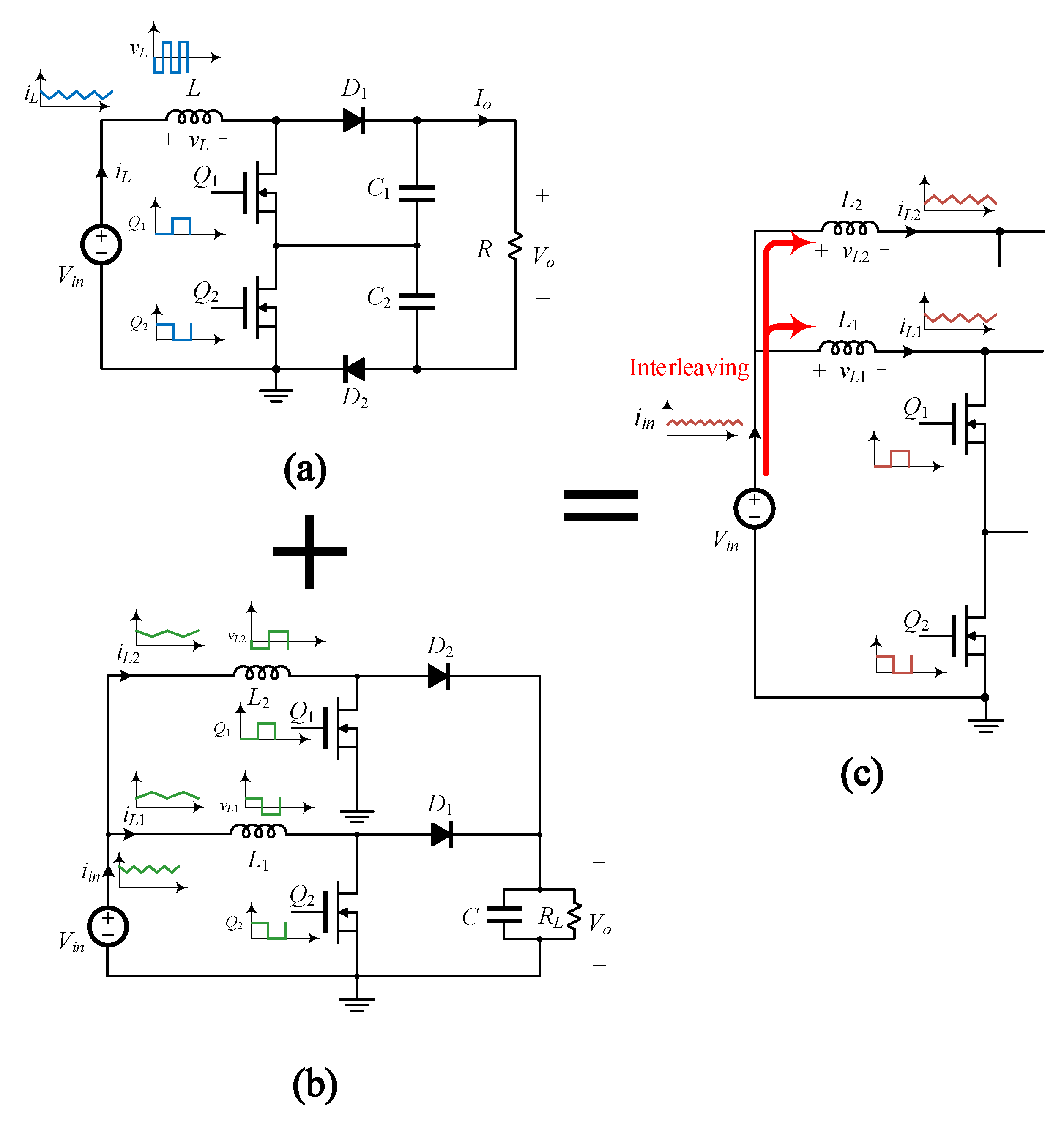

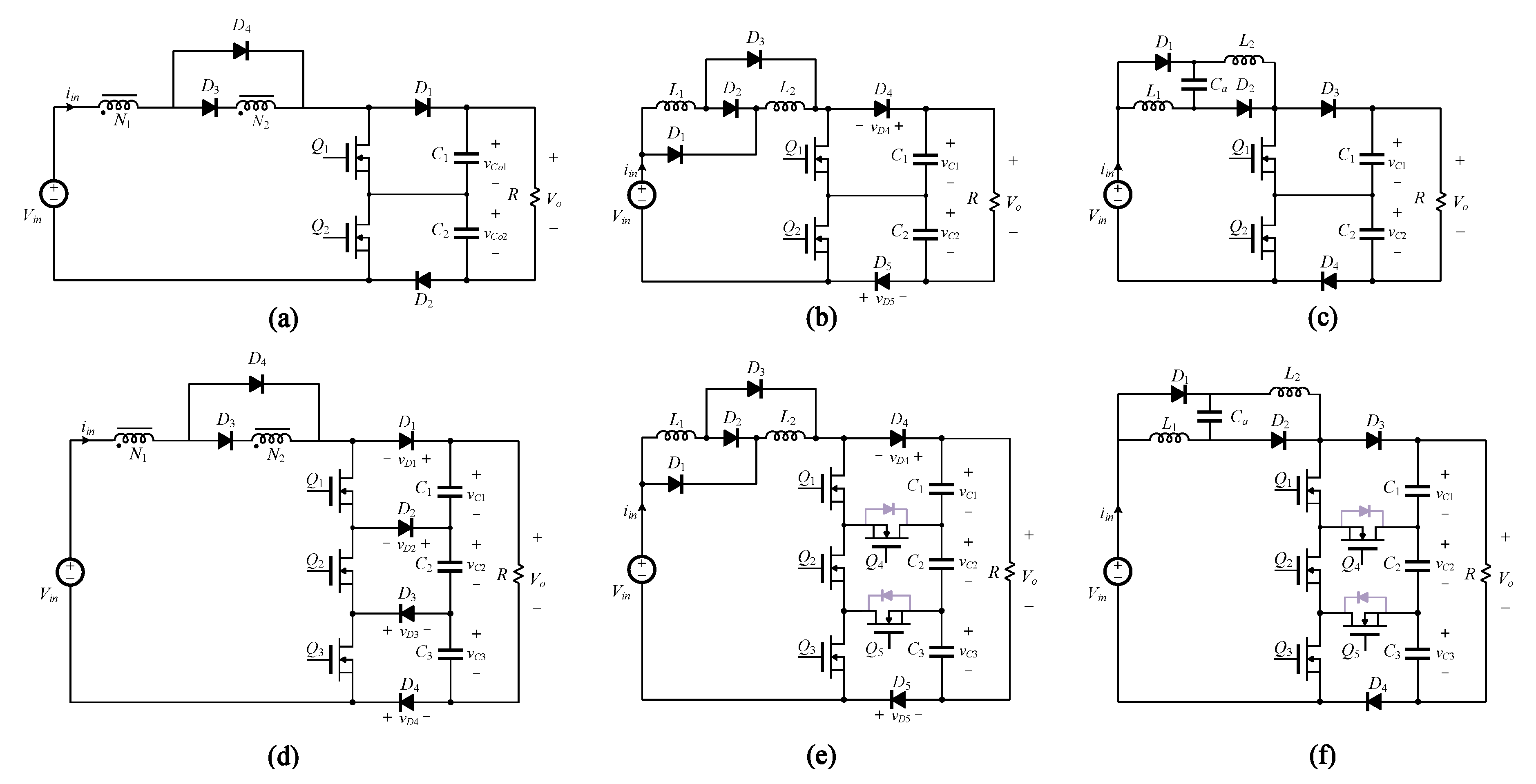
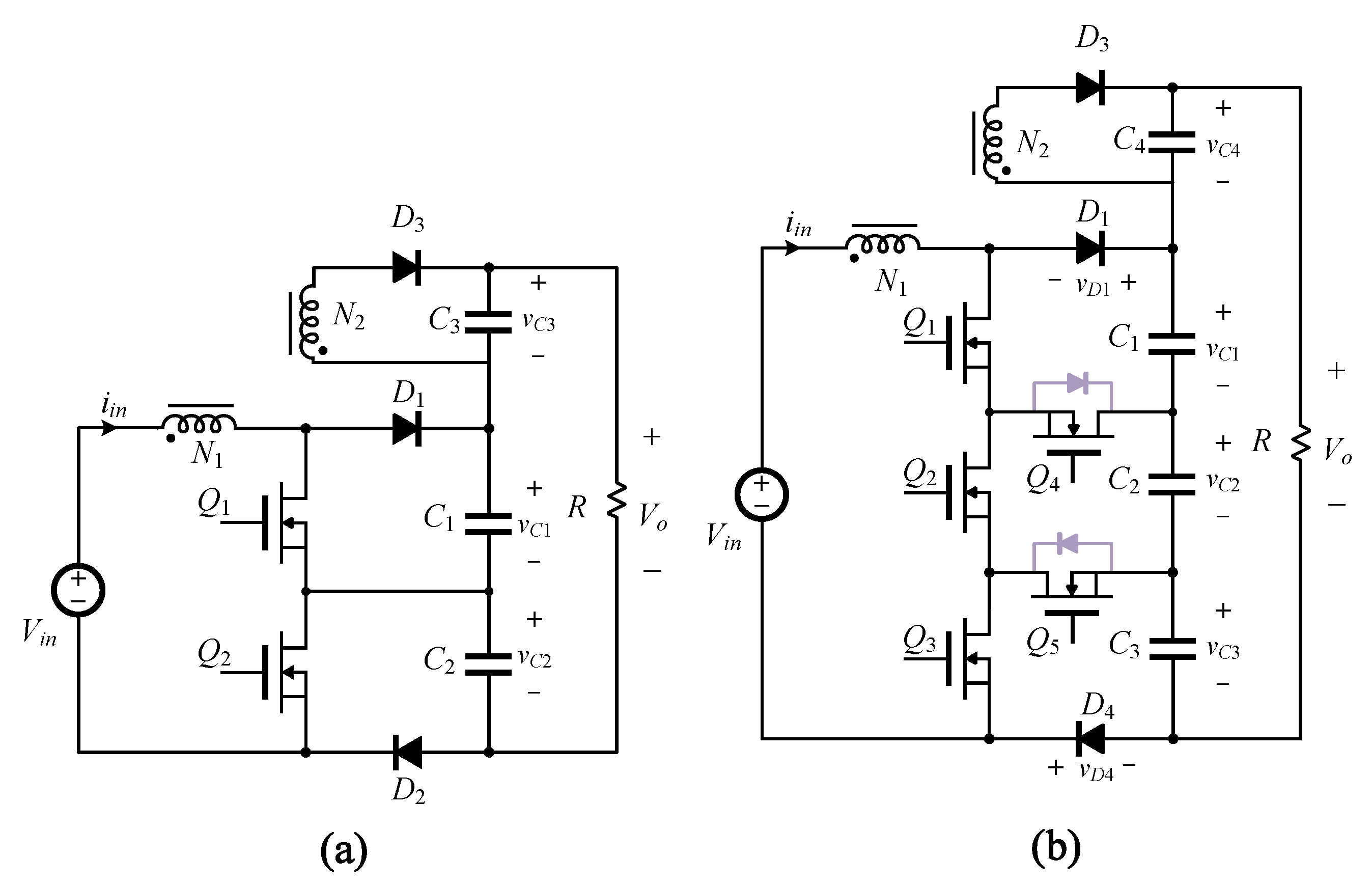



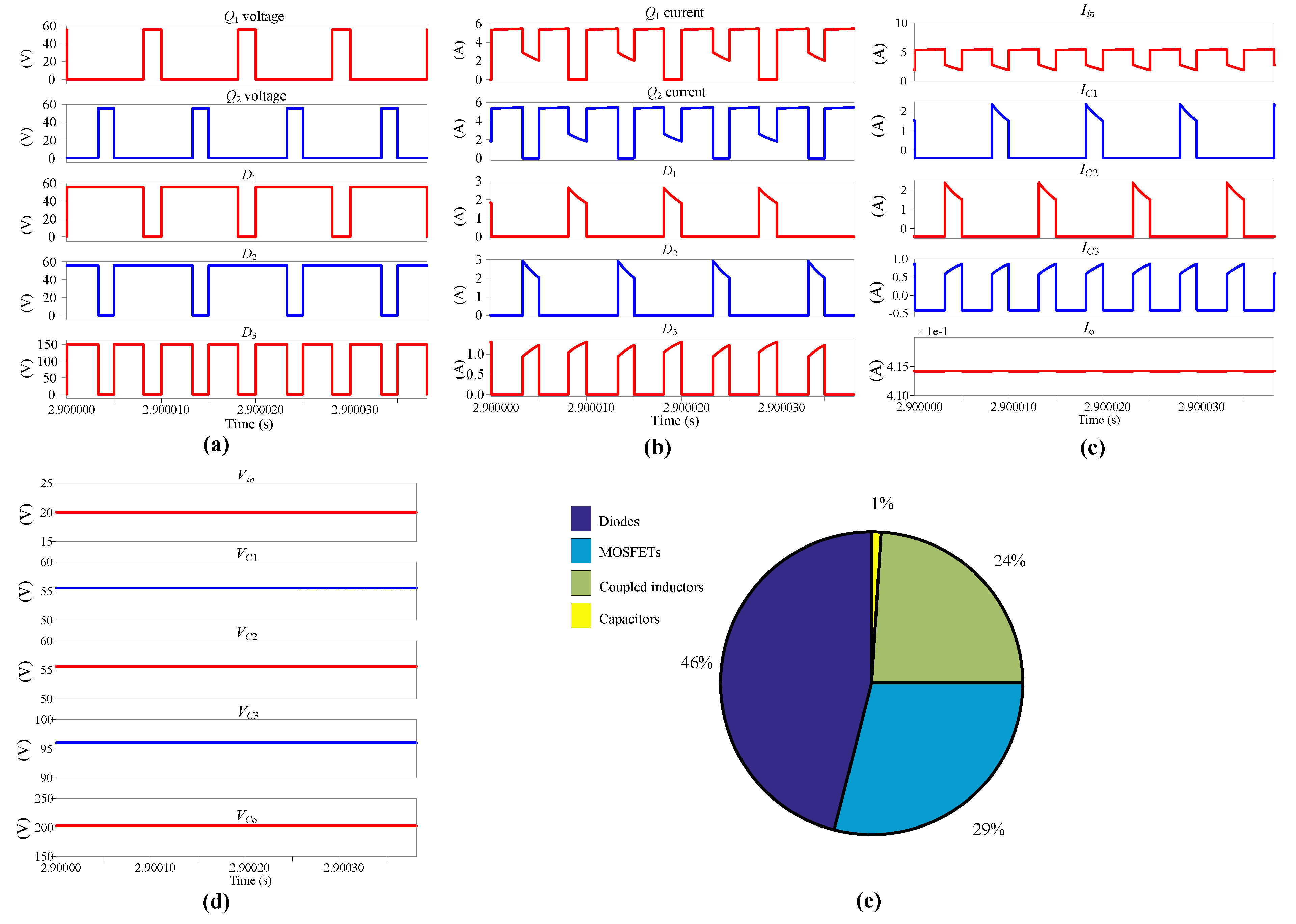


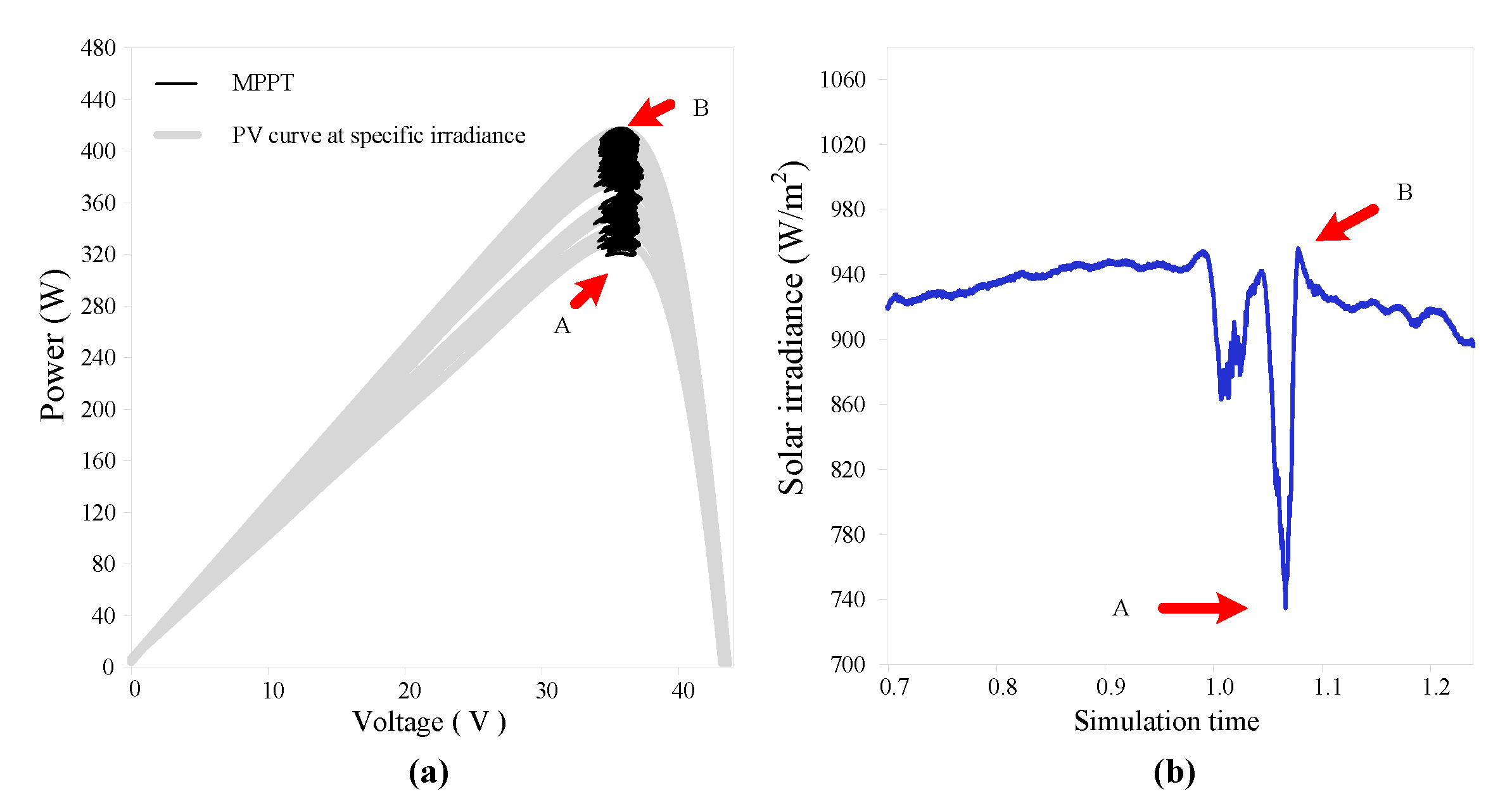
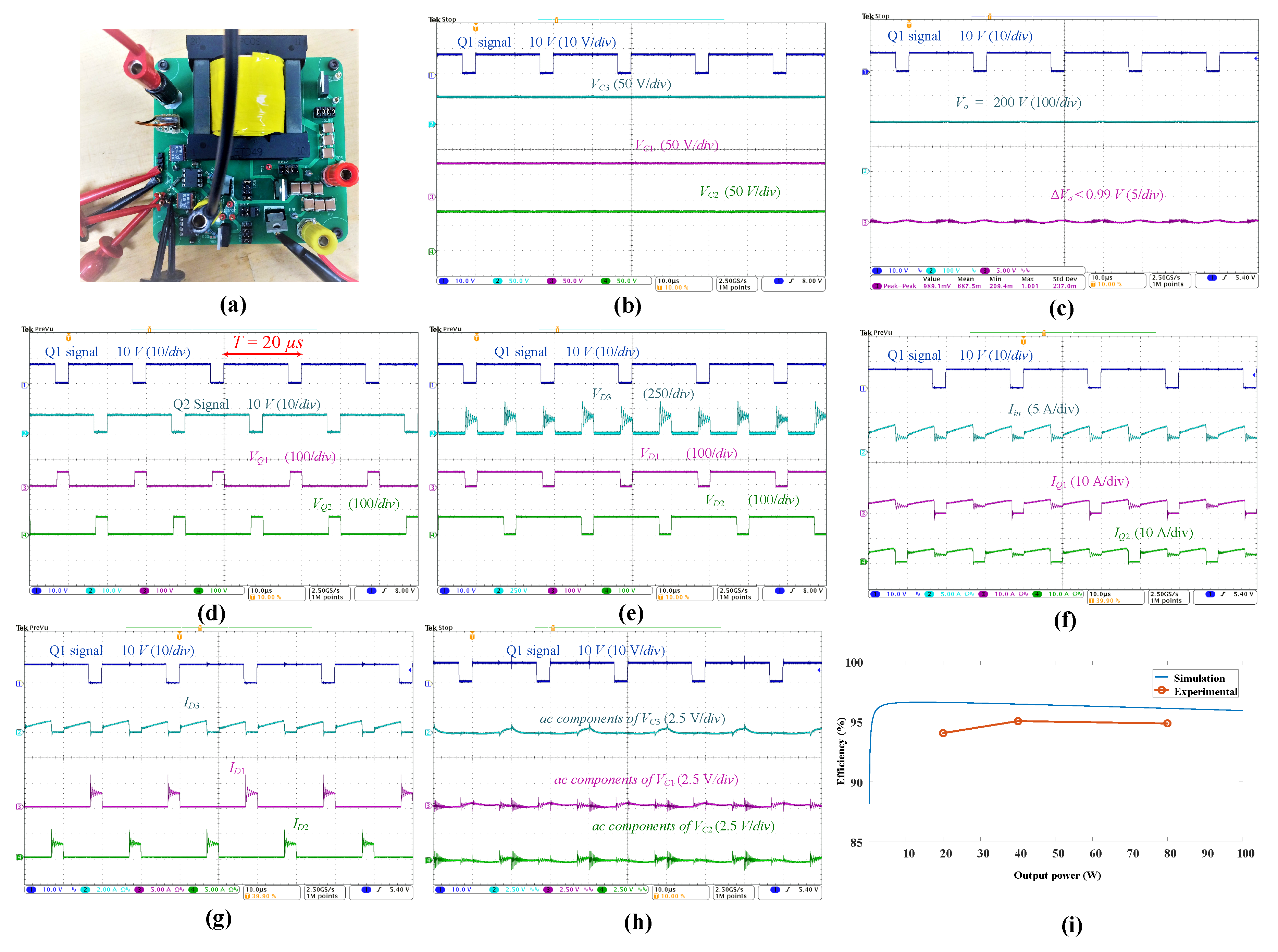
Publisher’s Note: MDPI stays neutral with regard to jurisdictional claims in published maps and institutional affiliations. |
© 2020 by the authors. Licensee MDPI, Basel, Switzerland. This article is an open access article distributed under the terms and conditions of the Creative Commons Attribution (CC BY) license (http://creativecommons.org/licenses/by/4.0/).
Share and Cite
Alzahrani, A.; Shamsi, P.; Ferdowsi, M. A Family of High Voltage Gain Three-Level Step-Up Converters for Photovoltaic Module Integration Applications. Energies 2020, 13, 6115. https://doi.org/10.3390/en13226115
Alzahrani A, Shamsi P, Ferdowsi M. A Family of High Voltage Gain Three-Level Step-Up Converters for Photovoltaic Module Integration Applications. Energies. 2020; 13(22):6115. https://doi.org/10.3390/en13226115
Chicago/Turabian StyleAlzahrani, Ahmad, Pourya Shamsi, and Mehdi Ferdowsi. 2020. "A Family of High Voltage Gain Three-Level Step-Up Converters for Photovoltaic Module Integration Applications" Energies 13, no. 22: 6115. https://doi.org/10.3390/en13226115
APA StyleAlzahrani, A., Shamsi, P., & Ferdowsi, M. (2020). A Family of High Voltage Gain Three-Level Step-Up Converters for Photovoltaic Module Integration Applications. Energies, 13(22), 6115. https://doi.org/10.3390/en13226115





